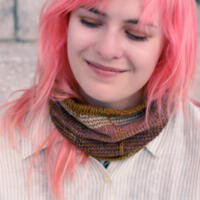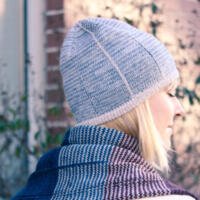
Worked in the round from cuff to fingertips, Ink Mitts use the helix knitting technique to create easy jogless one-row stripes on fingerless mitts offered in two versions – thumbless or with an ergonomic gusseted thumb. Completely reversible thanks to invisible color changes, one side displays stockinette and the other reverse stockinette, each with a slipped stitch decorative linear detail. Pair two contrasting colors, and revel in using up leftovers for the stripes; your versatile fingering weight yarn makes chic lightweight mitts. Construction: The helix knitting technique avoids the jog in color between stripe rounds, as well as removes the ridge where yarns are carried on the reverse of the work, making the mitts delightfully reversible. Helix knitting is used on the striped hand section of the Ink Mitts, with 4 stationary markers to indicate the position of the slipped stitch columns; check both sides of the work frequently, to be sure these columns are maintained. No EOR marker is needed, as the “round” is constantly spiraling around the work. The Ink Mitts are cast . . .









